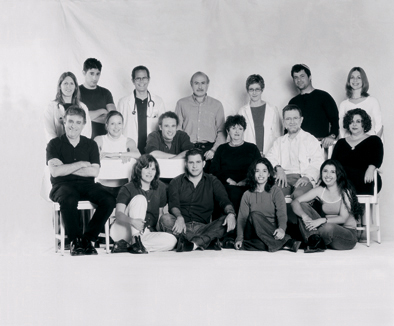Are you a journalist? Please sign up here for our press releases
Subscribe to our monthly newsletter:

In 1958, an accident at a nuclear reactor in the former Yugoslavia granted an ambitious young physician a once-in-a-lifetime opportunity. With numerous people harmed by the radiation that had spilled from the reactor, Dr. George Mathe came up with an idea for at least partially correcting the damaging effects: to treat these patients with bone marrow cells, known to produce disease-fighting immune cells.
Unfortunately, most of the treated patients had a violent immune response that rejected the transplanted cells. Only in the late 1960s did the teams of Dr. Robert Good and Dr. E. Donnall Thomas discover that bone marrow cells may be transplanted without the risk of rejection only when they have identical immuno-genetic characteristics to those of the recipient. Such a perfect match, however, is rare, even among family members.
Some 15 years later, Prof. Yair Reisner of the Weizmann Institute’s Immunology Department developed a method for successfully transplanting stem cells from the bone marrow of a partially matched donor. The method makes use of “megadoses” of stem cells, following Reisner’s discovery that this can help prevent rejection by paralyzing killer immune cells. The approach, developed in collaboration with Prof. Massimo Martelli of Italy’s University of Perugia, has substantially increased the pool of potential donors, paving the way for previously impossible life-saving transplants. It is now practiced successfully at medical centers throughout Europe and the United States, helping to treat hundreds of leukemia patients.
Future challenges include the development of gentler methods of stem cell transplantation. Rather than “wiping out” the recipient’s immune system through radiation, with the risks that this entails, Reisner and colleagues hope to discover how to surgically neutralize the immune cells waging the attack without compromising the entire system. The transplant recipient will in fact adopt the donor’s immune system and will be able to receive a transplant of any organ from that donor, without the risk of rejection. The implications of this medical breakthrough would include an unlimited supply of cells and organs for transplants, offering an immediate and relatively simple therapy for cancer, AIDS and other disorders.
Prof. Reisner's research is supported by Richard M. Beleson, San Francisco, CA; Renee Companez, Australia; the Crown Endowment Fund for Immunological Research; Erica A. Drake, Scarsdale, NY; the Ligue Nationale Francaise Contre le Cancer; the M.D. Moross Institute for Cancer Research; Mr. and Mrs. Barry Reznik, Brooklyn, NY; the Gabrielle Rich Center for Transplantation Biology Research; and the Union Bank of Switzerland-Optimus Foundation. He is the incumbent of the Henry H. Drake Professorial Chair in Immunology.